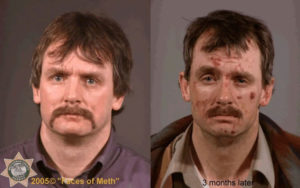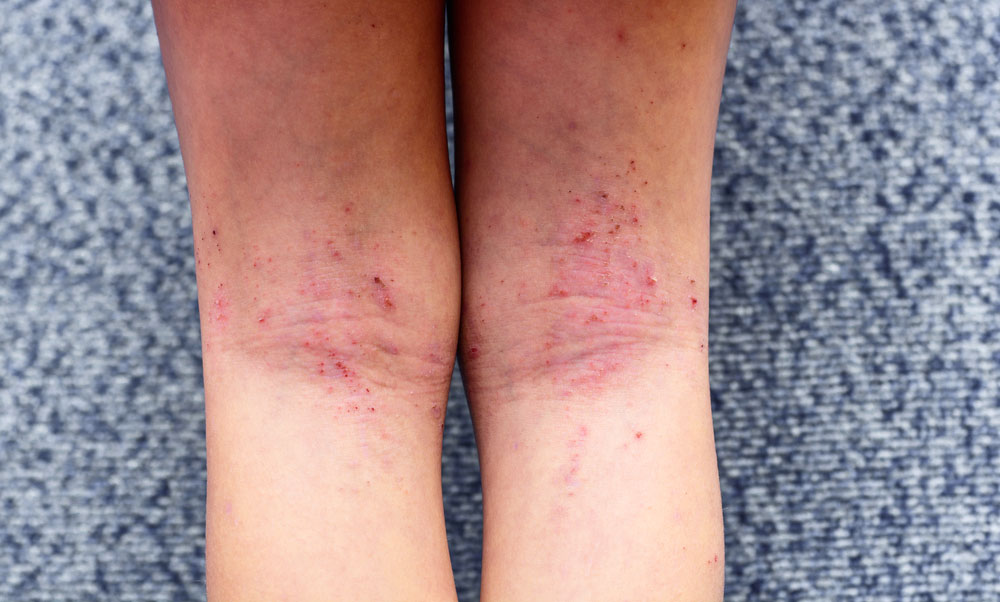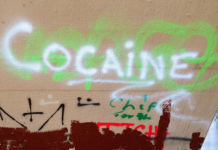disguisable with clothing. Naturally, the most commonly damaged area is the antecubital fossa – the triangular cavity of the elbow. When those veins become too damaged and inaccessible, users tend to try subcutaneous or intramuscular drug administration, or ‘skin-popping,’ which normally causes bacterial tissue trauma and often results in deep, atrophic scars or keloids.
Some of the most common complications from IDU are skin and soft tissue infections (SSTIs) such as abscesses and cellulitis.
Abscesses, or boils, are painful and swollen lumps filled with pus. Cellulitis is an infection that happens when bacteria spreads through the inner layers of skin, so affected areas ache and look swollen and red.
Heroin
In addition to skin complications caused by IDU, other common issues for heroin users are morbilliform (a rash that looks like measles) and chronic itching of the body or genital areas, which usually happens after heroin use, and can last several days.
Treatable conditions like acanthosis nigricans (dark, thick patches in body creases) as well as deadly bacterial infections such as necrotizing fasciitis (flesh-eating disease) have been reported among heroin users, but are especially common among black tar users.
A Brazilian Society of Dermatology study states that “in the early 1980s, a novel epidemic of pigmented tongue lesions, clinically and histologically consistent with fixed drug eruption, was described in Holland. All patients shared the habit of smoking heroin.”
The study focused on how the consumption of illicit drugs triggers premature aging, atrophic crinkling, and livedo reticularis, a condition that causes purplish, reddish discoloration of the skin and tissues.
“Skin discoloration is very common among drug abusers,” said Dr. Aline Henriques, a Rio de Janeiro-based dermatologist. “But more serious problems, such as bacterial abscesses and tissue necrosis, arise when drugs like heroin are injected.”
Cocaine
While heroin injection normally causes skin damage and bacterial infection, intravenous use of cocaine tends to cause skin discoloration from internal bleeding, also known as ecchymosis.
Nasal intake of cocaine can cause necrosis and perforation of the nasal septum/oral palate. Cocaine has also been linked to chronic skin tightening; hemorrhagic skin lesions that result from the leakage of red blood cells into the skin; inflammation of the blood vessels; and urticaria, a raised, itchy hive breakout that can appear in one part of the body or spread across several parts.
The U.S. Drug Enforcement Administration (DEA) estimates that about 70 percent of illicit cocaine detained in the U.S. contains a mixture of chemicals and adulterants, such as the veterinary anti-parasitic drug levamisole – consequently, levamisole-related problems including decomposing skin on ears, noses, cheeks, and other parts of the body and life-threatening skin conditions, such as hemorrhagic blisters have been more common.
Crack
Levamisole is also seen in crack cocaine. Because it’s smoked, crack cocaine often causes burns, cuts and even loss of lateral eyebrows.
Hyperkeratosis of the hands, a dermatologic condition so common among people who smoke crack that it became popularly known as ‘crack hands,’ is normally characterized by blackened palms, with linear and circular lesions.
All stimulants can lead to formication syndrome and delusions of parasitosis (DoP), which is when a person has hallucinations about insects crawling under their skin and start to compulsively pick their skin, creating wounds.
Methamphetamine


Meth is well known for causing formication and DoP. Repetitive skin picking occurs among many chronic meth users, which results in serious wounds that start off looking like small pimples but can quickly turn into ulcers. The wounds, called meth sores or meth mites, form quick and spread fast.
Even small doses of meth are capable of prompting acne outbreaks and a weakened immune system.
Meth users may sweat more than normal and have pale or grayish skin with a rough texture. Effects of meth use are more apparent when the drug is smoked since smoking increases wrinkle formation.
Alcohol
Alcohol abuse can also cause… (continue reading)
















